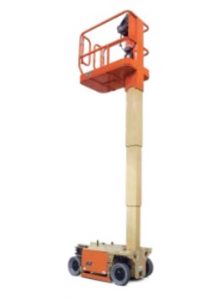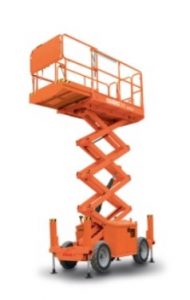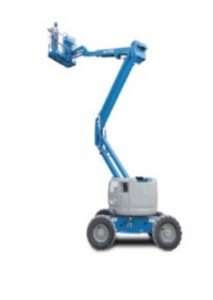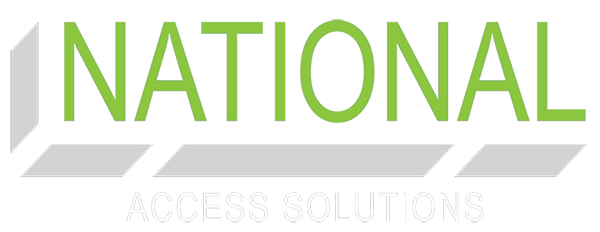What is an EWP?
Elevating work platform is the term used to describe all configurations of EWPs being self-propelled, trailer mounted (towable) or truck mounted. This term is not used when the work platform is an attachment such as a “personnel basket” or “cage” fitted to plant such as a forklift. Below are pictures of the most commonly found EWPs.
VL – Vertical lift ? SL – Scissor Lift
BL – Self-Propelled Boom Lift
TL – Trailer Mounted Lift
TM – Truck Mounted Lift
Elevating Work Platform – AS2550.10; 1.3.7
A mobile machine (device) that is intended to move persons, tools and material to working positions and consists of at least a work platform with controls, an extending structure and a chassis.
There are many variations of EWP but they can be placed in one of two categories: Boom type or Scissor type.
 Vertical type
Vertical type
 Scissor type
Scissor type
 Boom type
Boom type
An elevating work platform by which is described as a ‘Telescoping device, hinged device, or articulated device or any combination of these used to support a platform/basket on which personnel, equipment and materials may be elevated to perform work’. Boom types can be self-propelled, trailer mounted, truck mounted, and come with or without outriggers or stabilisers.
Vertical mast or personnel lifts come in two configurations. Both elevate us
vertical direction only. These lifts usually have limited capability in terms of weight and extension, and
ing a telescopic mast in a
are most often used for internal maintenance tasks, such as changing light bulbs.
- The Wheel Around type has a basket attached directly to the upright mast, has no reaching capability and does not slew.
- The Self Propelled type may have a small fly jib giving it reaching out and slewing capabilities. If the vertical lift has a
boom fitted, a harness must be worn at all times while operating.
Scissor type EWP is described as a ‘work platform which can only move in the vertical plane on which personnel, equipment and materials may be elevated to perform work’. Unlike the boom type, it has no ability to telescope or rotate. The mechanism to achieve this is the use of linked, folding supports in a criss-cross ‘X’ pattern. Scissor types can be self-propelled, trailer or truck mounted and come with or without outriggers or stabilisers.
